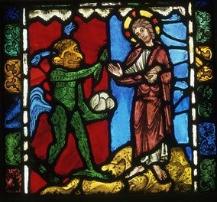Towards an Iconography of Colour in the Twelfth Century

Tuesday 19 November 2013, 5.30PM
A strong interest in the materials and colours of the Tabernacle, as described in the book of Exodus, is reflected in the writings of Jerome, Bede and other commentators of the early medieval period. Evidence indicates that in the twelfth century such texts were avidly collected in important English monastic houses such as St Albans, Bury St Edmunds and at Canterbury. In Europe the importance given to Biblical descriptions of the Tabernacle is revealed in the words of writers such as the artist-monk Theophilus, Bernard of Clairvaux and Hugh of St Victor. Towards the end of the century Lothar of Segni, the future Pope Innocent III, discussed the significance of the colours to be worn by the clergy of the Roman Church, relying mainly on the interpretations of colours made by earlier writers.
The extensive interpretative analysis of the meanings of materials and colours provided by such texts assisted readers in understanding the Scriptures. However, less apparent is how this exegesis influenced the use of colours by artists and their advisors during the twelfth century. This seminar attempts to clarify the relationship between the long established textual iconography of colour and the rich visual language employed by artists and craftsmen in manuscript illumination and church decoration during this period.
Location: King's Manor KG/84
